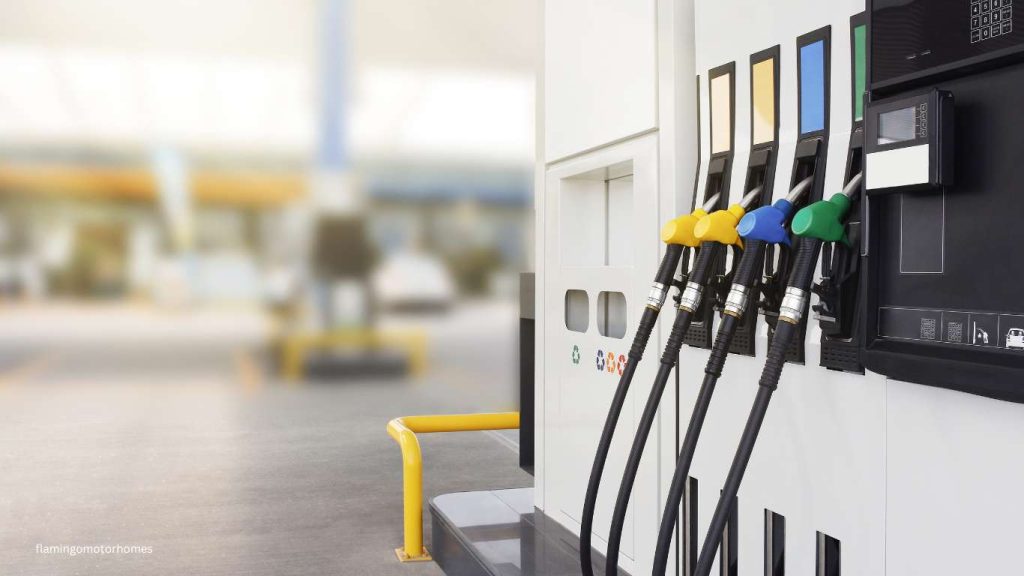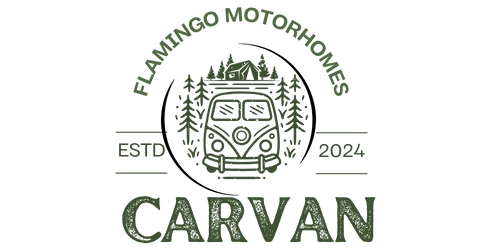Living in a motorhome is an exciting lifestyle choice, offering freedom and adventure. But how much does it cost to live in a motorhome? This guide breaks down the key expenses, so you can plan your dream on-the-road life.

Understanding Motorhome Living Costs
The cost of living in a motorhome can vary greatly depending on factors like your travel style, the type of motorhome you own, and your lifestyle preferences. Below are the primary expenses to consider.
1. Motorhome Purchase or Rental Costs
- Buying a Motorhome:
- New motorhomes: $50,000–$200,000 or more.
- Used motorhomes: $20,000–$100,000.
- Renting a Motorhome:
- Average cost: $100–$300 per night.
Your upfront investment or rental fees will significantly impact your overall costs.
2. Campground Fees
- RV Parks: $30–$70 per night.
- State or National Parks: $20–$40 per night.
- Free Camping: Many travelers opt for boondocking (free camping), especially on public lands.
3. Fuel Costs
Fuel is one of the largest ongoing expenses for motorhome living. Costs depend on:
- Vehicle size: Larger motorhomes consume more fuel.
- Travel frequency: Regularly driving long distances increases expenses.
- Average fuel cost: $3–$5 per gallon (subject to location and fluctuations).
Estimate $200–$500 per month for moderate travel.
4. Insurance and Maintenance
- Insurance: $500–$2,000 annually, depending on coverage and the motorhome type.
- Maintenance: Routine maintenance can cost $500–$1,000 per year. Major repairs may cost more.
5. Utilities and Supplies
- Propane: $30–$60 per month for heating and cooking.
- Electricity: Often included in campground fees or minimal with solar panels.
- Groceries and Essentials: $300–$600 per month, depending on family size and dietary habits.
6. Miscellaneous Expenses
- Internet and Mobile Plans: $50–$150 per month.
- Laundry: $20–$40 per month.
- Entertainment: Budget for local activities, dining out, or sightseeing.

Total Monthly Cost of Motorhome Living
A typical range for motorhome living costs is $1,500–$3,000 per month. However, expenses can vary significantly depending on your choices and travel habits.
How to Save on Motorhome Living Costs
- Opt for free or low-cost camping options like boondocking.
- Travel shorter distances to reduce fuel consumption.
- Use solar panels to minimize utility costs.
- Cook meals at home instead of dining out.
Is Motorhome Living Right for You?
Living in a motorhome offers unparalleled freedom but comes with financial responsibilities. By understanding the costs involved, you can budget effectively and enjoy the adventure without stress.
How Much Does It Cost to Live in a Motorhome vs. a House?
Choosing between motorhome living and traditional housing is a big decision. Understanding the cost differences can help you decide which lifestyle suits your budget and preferences. Here’s a detailed comparison.

Motorhome Living Costs
1. Initial Investment
- Motorhome:
- New: $50,000–$200,000+
- Used: $20,000–$100,000
- Financing options available with lower monthly payments compared to a home mortgage.
- House:
- Average home price in the U.S.: $300,000–$400,000.
- Requires a significant down payment, typically 10%–20%.
Verdict: Motorhomes often have a lower upfront cost but depreciate faster than houses, which typically appreciate in cost for living in a Motorhome.

2. Monthly Living Expenses
| Expense Category | Description | Estimated Monthly Cost (USD) |
|---|---|---|
| Fuel | Gasoline or diesel for traveling | $200–$800 |
| Maintenance | Repairs, oil changes, tire replacements, etc. | $50–$300 (varies monthly) |
| Campground Fees | Costs for RV parks or campgrounds | $300–$1,000 |
| Insurance | Coverage for motorhome and liability | $50–$250 |
| Groceries | Food and household supplies | $300–$600 |
| Utilities | Propane, electricity, water, and sewage fees | $50–$200 |
| Internet and Phone | Mobile data plans, satellite internet, etc. | $50–$150 |
| Entertainment | Activities, attractions, subscriptions, etc. | $50–$300 |
| Registration and Taxes | Motorhome registration and annual taxes | $20–$100 |
| Miscellaneous | Laundry, tools, unexpected expenses | $50–$150 |

Housing Payment
- Motorhome Loan Payment: $500–$1,500/month (depending on price and loan terms).
- Mortgage Payment: $1,500–$3,000/month (varies by home price and location).
Utilities and Bills
- Motorhome:
- Propane: $30–$60/month.
- Campground fees: $600–$1,200/month.
- Electricity: Often included in campgrounds; solar options can reduce costs.
- House:
- Electricity, water, and gas: $200–$400/month.
- Property taxes: $200–$500/month (varies widely).
Verdict: Motorhome costs are more flexible and can be reduced by boondocking, while houses come with fixed expenses like taxes cost for living in a Motorhome.
| Expense Category | Class A (Luxury) | Class B (Camper Van) | Class C (Mid-Sized) |
|---|
| Fuel | $300–$1,000 (low MPG, larger tank) | $150–$500 (higher MPG, smaller tank) | $200–$700 (moderate MPG) |
| Maintenance | $100–$400 (high repair costs) | $50–$200 (simpler systems) | $75–$300 (moderate repair costs) |
| Campground Fees | $400–$1,500 (frequent hookups) | $200–$800 (more boondocking) | $300–$1,000 |
| Insurance | $100–$400 (higher value vehicle) | $50–$150 (smaller size, lower value) | $75–$250 |
| Groceries | $400–$700 (larger families or full kitchen usage) | $200–$500 (smaller storage) | $300–$600 |
| Utilities | $100–$300 (higher energy needs) | $50–$150 (efficient energy use) | $75–$200 |
| Internet and Phone | $100–$200 (data plans for heavy usage) | $50–$150 | $75–$150 |
| Entertainment | $100–$400 (luxury amenities, attractions) | $50–$200 | $75–$250 |
| Registration and Taxes | $50–$300 (depends on size/value) | $20–$100 | $30–$150 |
| Miscellaneous | $100–$300 (more complex needs) | $50–$150 | $75–$200 |

3. Maintenance and Repairs
- Motorhome: $500–$1,000 annually for routine maintenance; major repairs can cost more.
- House: $1,000–$3,000 annually for repairs and upkeep, depending on the age and size of the home.
Verdict: Houses generally have higher ongoing maintenance costs.

4. Fuel and Transportation
- Motorhome: $200–$500/month (depends on travel frequency and gas prices).
- House: Minimal transportation costs unless commuting; however, car ownership adds fuel, insurance, and maintenance cost for living in a Motorhome.
Verdict: Motorhome living costs increase with frequent travel, while house dwellers typically spend less on fuel unless commuting long distances.

5. Lifestyle and Miscellaneous Costs
- Motorhome:
- Internet/mobile plans: $50–$150/month.
- Laundry: $20–$40/month at laundromats.
- Entertainment: Varies based on activities.
- House:
- Home internet: $50–$100/month.
- Amenities: Gym memberships, entertainment subscriptions, or HOA fees.
Verdict: Both lifestyles incur similar miscellaneous costs, but motorhome living offers more opportunities for low-cost entertainment like hiking and exploring nature.
6. Location Expenses:
| Expense Category | California | Texas | Florida | Oregon | Arizona |
|---|
| Fuel | $300–$900 (higher gas prices) | $250–$700 (moderate gas prices) | $250–$750 | $250–$750 | $200–$700 (lower gas prices) |
| Campground Fees | $700–$1,500 (high demand) | $400–$1,000 (affordable options) | $500–$1,200 (seasonal demand) | $400–$1,000 | $300–$900 (off-season discounts) |
| Groceries | $400–$700 (higher costs) | $300–$600 | $350–$650 | $350–$650 | $300–$600 |
| Utilities | $100–$300 (depends on hookups) | $50–$150 (boondocking opportunities) | $75–$200 | $75–$200 | $50–$150 |
| Insurance | $150–$400 (higher premiums) | $100–$300 | $100–$300 | $100–$300 | $75–$250 |
| Entertainment | $100–$500 (attractions, theme parks) | $50–$300 | $75–$400 (coastal activities) | $75–$300 | $50–$200 |
| Registration and Taxes | $200–$500 (high registration fees) | $50–$150 | $50–$200 | $50–$200 | $50–$150 |
| Miscellaneous | $100–$300 | $75–$200 | $75–$250 | $75–$200 | $50–$150 |

Pros and Cons of Motorhome Living vs. a House
Motorhome Living
Pros:
- Lower initial investment.
- Freedom to travel and explore.
- Flexible living expenses (e.g., free camping options).
Cons:
- Depreciates in value over time.
- Limited space for families.
- Costs like fuel can vary greatly.
House Living
Pros:
- Property appreciation over time.
- Stable living environment.
- Larger space for families and storage.
Cons:
- Higher initial and monthly costs.
- Less flexibility to move.
- Fixed bills like taxes and utilities.
Which Is Cheaper: Motorhome or House?
For many, motorhome living is cheaper, with average monthly costs of $1,500–$3,000, compared to a house’s $2,000–$5,000 (mortgage, taxes, utilities). However, long-term house ownership may build equity, whereas a motorhome depreciates.
Final Thoughts
Choosing between a motorhome and a house depends on your financial goals and desired lifestyle. If freedom, travel, and lower monthly expenses appeal to you, motorhome living is a great choice. For stability and long-term investment, a traditional house may be the better option cost for living in a Motorhome.
How to Reduce Motorhome Living Costs
Living in a motorhome can already be more affordable than traditional housing, but there are plenty of ways to cut expenses even further. Here’s how to reduce motorhome living costs while enjoying the freedom of the open road.
1. Embrace Free Camping (Boondocking)
Boondocking, or free camping on public lands, is a fantastic way to save money.
- Where to Find Free Sites:
- Bureau of Land Management (BLM) areas.
- National forests.
- Apps like iOverlander and Campendium.
- Savings: Avoid campground fees that typically range from $30–$70 per night.
2. Install Solar Panels
Solar energy reduces or eliminates your need for paid hookups.
- Initial Cost: $500–$2,000 (depending on system size).
- Long-Term Savings: Lower electricity costs at campgrounds or while boondocking.
3. Cook Your Own Meals
Eating out adds up quickly. Save money by preparing meals in your motorhome.
- Use compact appliances like slow cookers or air fryers for versatility.
- Plan meals in advance to avoid waste.
- Shop at discount grocery stores or farmer’s markets for fresh, budget-friendly ingredients.
4. Travel Less Frequently
Fuel costs are a major expense for motorhome living. Reduce them by:
- Planning extended stays in one location.
- Mapping efficient travel routes to minimize mileage.
- Choosing destinations close to each other.
5. Take Advantage of Membership Discounts
Joining RV memberships can provide big savings:
- Good Sam Club: Discounts on campgrounds and fuel.
- Passport America: 50% off camping fees at participating locations.
- Harvest Hosts: Free overnight stays at farms, wineries, and more.
6. Maintain Your Motorhome Regularly
Preventive maintenance can save you costly repairs later.
- Change oil and filters on schedule.
- Check tires for proper inflation (reduces wear and improves fuel efficiency).
- Address small issues before they become expensive problems.
7. Downsize and Declutter
- Limit what you bring to reduce weight and improve fuel efficiency.
- Sell or donate unnecessary items to create more space and simplify your life.
8. Utilize Public Resources
- Use free Wi-Fi at libraries or coffee shops to reduce mobile internet cost for living in a Motorhome.
- Wash clothes at laundromats instead of investing in expensive RV washing machines.
- Refill water tanks at free or low-cost stations.
9. Monitor Your Expenses
- Use budgeting apps to track spending and identify unnecessary costs.
- Set monthly limits for non-essentials like entertainment or dining out.
10. Buy Used or Refurbished Gear
- Look for second-hand camping equipment, tools, and RV accessories.
- Check online marketplaces or RV community groups for deals.
Reducing motorhome living costs is about smart planning, making the most of free resources, and embracing a simpler lifestyle. By implementing these tips, you can lower expenses and enjoy the full benefits of motorhome living without breaking the bank.
More related information will be available on website Flamingo Motorhomes

